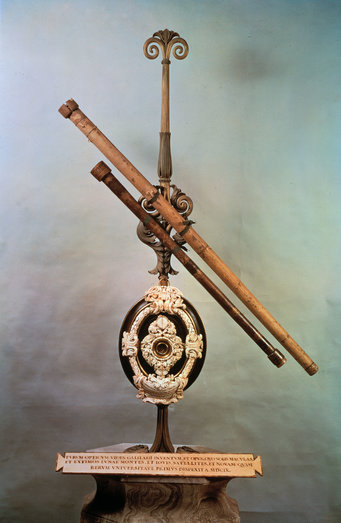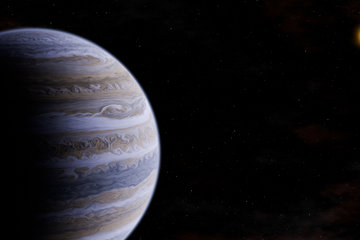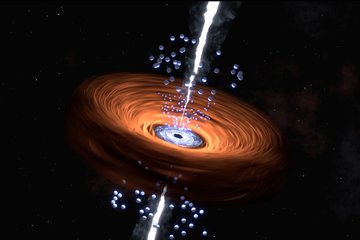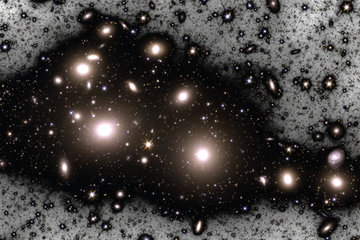An organ pipe as a telescope
How the mathematics professor Galileo became a passionate telescope builder and enthusiastic sky watcher
Galileo Galilei was the first scientist to recognise the importance of the telescope for astronomy. He built several such instruments himself – compiling a shopping list of the requisite components on the back of a letter. These included artillery balls and Tripoli powder.
Text: Matteo Valleriani
Galileo Galilei was appointed professor of mathematics in Padua in 1592. He remained there for 18 years and over the course of this period his house was transformed into a military academy. In exchange for payment, he trained officers in the art of warfare and gave introductory lectures in geometry, technical drawing and fortress construction. Students of different nationalities resided there with their servants. He also established a workshop for the production of mathematical tools for military purposes.

When the news of the telescope invented in Holland spread through Europe, Galileo Galilei was already renowned as an excellent technician. He could now reap the benefits of his connections with craftsmen and the experience he had gained in the workshops of spectacle-makers. Starting with a telescope that magnified things by a factor of two or three, he very quickly succeeded in building one that could achieve nine-fold magnification. When he presented his first telescope to the rulers of Venice on 24 August 1609, it had not yet occurred to him to point it at the sky; he had, instead, mainly military applications for the instrument in mind.
Once he began to observe the night sky with the telescope, Galileo became the pioneer of telescopic astronomy. From his very first look at the heavens, he sensed the enormous potential of the new instrument. The view it afforded of the numerous, previously invisible stars and the contours of the moon’s surface were reason enough to build a new and even better telescope.
How he went about this is divulged by a shopping list written on the back of a letter which Ottavio Branzini sent him from Venice. At the top of the list were items from Venice, such as Malvasia wine and clothes for his domestic partner Marina. These items are followed by a very strange list of objects: artillery balls, two tin organ pipes, Tripoli powder, iron bowls, Greek pitch and felt.
Galilei had assembled the utensils which he deemed necessary for the construction of a telescope. Artillery balls, for example, are almost perfectly rounded. Spectacle makers used them to grind glass lenses. Galilei also planned to use Greek pitch and Tripoli powder for the grinding process. The felt was required for the subsequent polishing, and the organ pipes could be used as tubes.
Using various materials, such as German spectacle lenses, mirror glass and rock crystal, and with the help of various technical processes – he had already acquired his own grinding machine for lenses in late 1609 – Galilei designed an excellent telescope. In January 1610, he spotted the first three of what would later become four Jupiter moons. He drew the moon in a way that no one had ever seen it before: with mountain ranges and valleys. He hurriedly published his explosive findings. By 12 March 1610, 550 printed copies of his work Sidereus Nuncius (Starry Messenger) had been dispatched into the world. This treatise would make him famous throughout Europe.












